Naruto is still one of anime’s most beloved franchises that has bombarded viewers with its shinobi world and memorable characters. Even with its massive popularity, certain fundamental issues have plagued the series. While a remake might fix animation inconsistencies or pacing problems, some criticisms run deeper.
These issues have become baked into the foundation of Naruto. They’re not just minor complaints—they reflect more in-depth problems that have persisted throughout the series.
1. Sidelined Supporting Shinobi

As the focus turns to Naruto and Sasuke, many side characters receive less attention and development in the Naruto series. This wasn't a production discretion – it was a narrative intention to focus extremely on a select few characters.
Characters like Rock Lee, who represented ninjas succeeding through pure effort rather than natural talent, had powerful storylines that were ultimately abandoned. Neji's death, feeling like a convenient plot device rather than a meaningful character conclusion, showed the series' tendency to waste potential. This issue stems from fundamental story structure decisions that even a perfect remake would likely maintain.
2. Female Shinobi’s Stunted Development
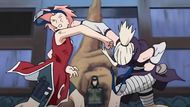
Naruto's female characters often lack profundity and growth. Despite introducing strong kunoichi like Tsunade and Sakura, the series invariably placed female characters as secondary to their male counterparts. Other female characters like Ino, Tenten, and Kurenai acquire minimal screen time and character arcs, often relegated to supporting roles without substantial growth.
Sakura mastered medical ninjutsu at record speed and possessed incredible strength, yet remained perpetually behind her teammates in significance and power. Most female characters had their motivations tied to male characters, and many powerful kunoichi eventually surrendered their careers for domestic life.
3. The Jinchuriki’s Puzzling Neglect
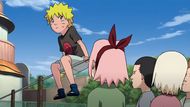
Naruto's childhood circumstances create a plot inconsistency that weakens the story’s overall coherence. As the Fourth Hokage's son and the jinchūriki hosting the Nine-Tails, his complete abandonment and lack of guidance make little sense within the established world.
A child carrying such a dangerous power would logically receive supervision and training to prevent disaster. Even ignoring his heroic parentage, basic self-preservation would dictate that the village monitor him closely.
4. Romance Without Foundation in Naruto

Romantic relationships in Naruto are often handled as underdeveloped and rashly terminated. Sakura's connection with Sasuke progresses despite multiple attempts on her life and years of absence. Naruto remains largely oblivious to Hinata’s affection throughout the series, only for their relationship to abruptly culminate in marriage. These pairings feel forced rather than natural culminations of momentous interactions.
The issue isn't the specific pairings themselves but the lack of organic relationship development. This stems from being primarily action-focused, with romance treated as an afterthought.
5. The Redeemed Snakes’ Unearned Forgiveness

Orochimaru's redemption arc stands as one of the series’ most controversial narrative decisions. After conducting horrific experiments on children, attempting body possession, and being responsible for countless deaths, including the Third Hokage, his casual acceptance back into village life feels deeply problematic.
The fundamental issue isn't that villains can't be redeemed, but that Orochimaru never truly faced consequences proportional to his crimes. Having former victims like Yamato and Anko interact civilly with him undermines the trauma they experienced.
6. Prophecy vs. Hardwork Contradiction
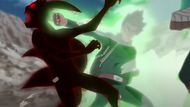
Naruto begins with the inspiring message that determination can overcome natural talent, only to later reveal the protagonist as a destined child of prophecy with an extraordinary heritage. This core conflict weakens one of the show’s main messages.
Learning that Naruto is the reincarnation of Ashura with extraordinary genetics contradicts the underdog narrative established in early arcs. Might Guy and Rock Lee proved that effort can outshine natural skill. But later, Naruto becoming the chosen one felt like it went against that idea.
7. Kurama’s Rushed Friendship
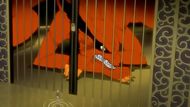
The relationship between Naruto and the Nine-Tailed Fox, Kurama, suffers from inadequate development before their sudden friendship. Despite the importance of their bond, they share remarkably few meaningful interactions before the War Arc transforms them into partners.
This relationship deserved gradual evolution through regular conversations and growing mutual respect. Instead, they're antagonistic in their limited interactions until suddenly becoming allies.
8. Power Scaling Gone Nuclear Blast
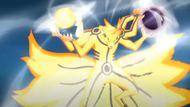
As the series progresses, characters gain increasingly exaggerated abilities, leading to a phenomenon known as power creep. Initially grounded in strategic combat, the series evolves into battles featuring god-like powers, making earlier conflicts seem trivial. Early fights like Zabuza vs. Kakashi showcased strategy and specific ninja techniques.
By the War Arc, battles devolved into massive energy projections and godlike abilities. This transition moves the series away from its core identity, replacing intricate strategies with overwhelming displays of power.
9. Underdeveloped Historical Context
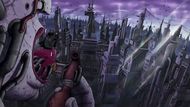
The series presents a fascinating world with multiple ninja villages, unique cultures, and complex international politics. Yet the series rarely explores these elements beyond their immediate relevance to the main plot. The rich history and cultural differences between villages remained largely undeveloped.
This criticism reflects the creator's storytelling priorities rather than production limitations. The series focused intensely on specific characters and conflicts at the expense of deeper world-building.
10. Last-Minute Alien Origins
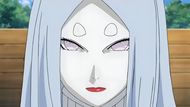
The introduction of Kaguya as the ultimate villain undermined years of carefully established lore about chakra's origins and ninja history. This eleventh-hour revelation that chakra came from space aliens felt disconnected from the world-building fans had invested in.
This issue stems from fundamental plot decisions rather than execution problems. After establishing Madara as the series' ultimate threat, switching to Kaguya disrupted narrative coherence in ways no remake could fix.
In the end, whatever criticism Naruto got, the story has moved millions around the world. Its flaws didn’t diminish its accomplishments or the genuine emotional connections that have formed with its viewers. The tale lasted because it was admired and questioned with the same intensity.
